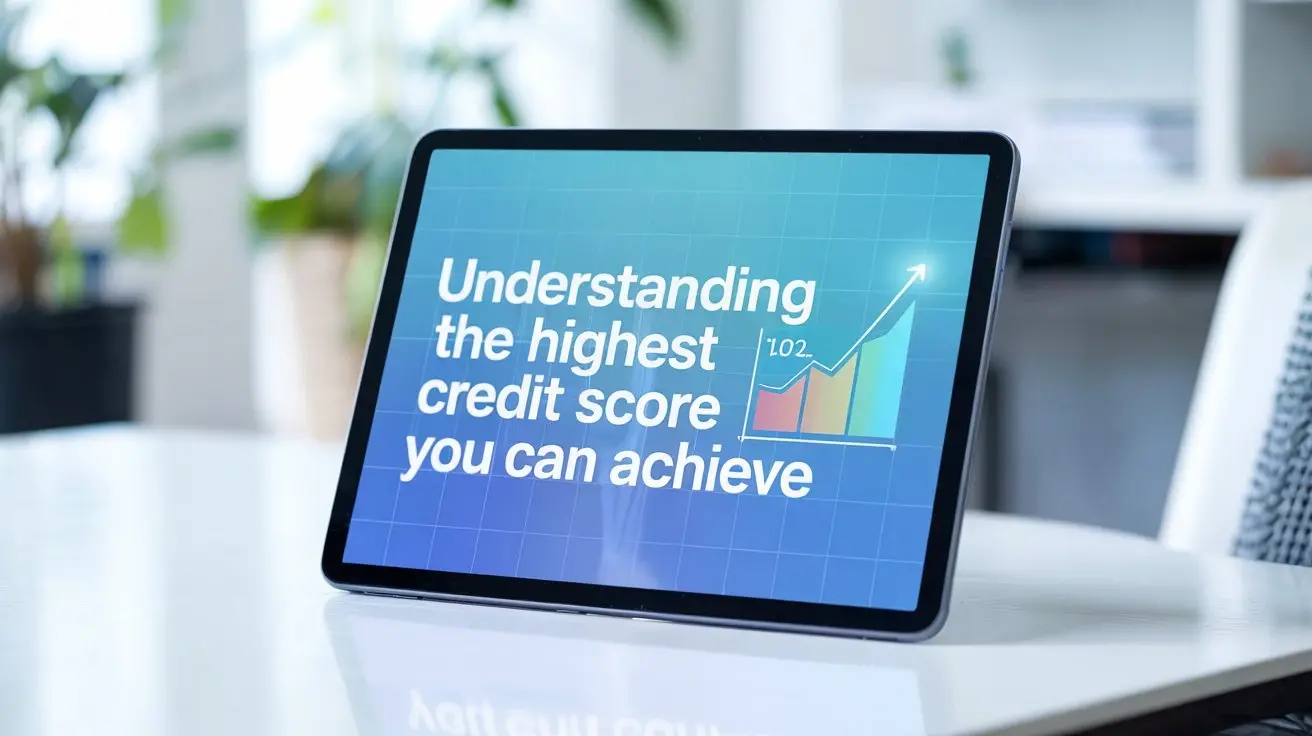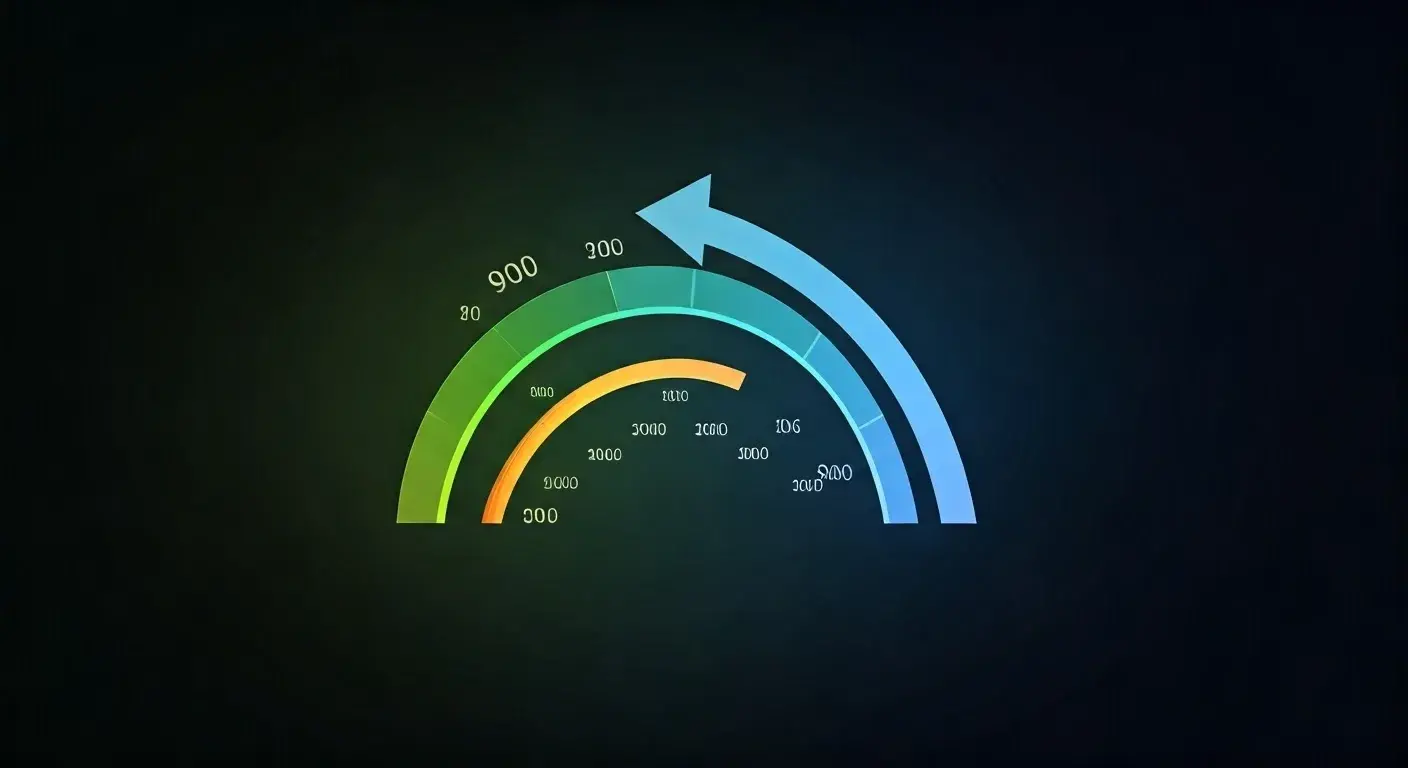-
Posted on: 02 Apr 2025

-
Boosting your financial health is intrinsically linked to improving your credit score. A higher credit score unlocks better loan terms, lower insurance premiums, and even easier apartment rentals. This comprehensive guide will equip you with the knowledge and actionable steps needed to significantly raise your credit score in 2025.
Understanding Credit Scores
A credit score is a three-digit number that lenders use to assess your creditworthiness. It's a snapshot of your financial behavior, indicating how likely you are to repay borrowed money. In the United States, the most common scoring models are FICO and VantageScore. While their exact calculations differ, they both aim to predict the risk associated with lending to a particular individual. For 2025, understanding these models is more crucial than ever as financial institutions refine their risk assessment algorithms. A good credit score is generally considered to be above 670, with scores above 740 often qualifying for the best interest rates and terms. Scores above 800 are considered exceptional.
The primary purpose of a credit score is to provide a standardized and objective measure of credit risk. When you apply for a loan, credit card, mortgage, or even certain types of insurance or rental agreements, a lender will pull your credit report and often a credit score. This score helps them decide whether to approve your application and at what interest rate. A higher score signals to lenders that you are a responsible borrower, making them more willing to extend credit to you and on more favorable terms. Conversely, a low score suggests a higher risk, potentially leading to outright rejection or significantly higher costs.
The credit scoring landscape is constantly evolving. In 2025, expect continued emphasis on predictive analytics and the integration of alternative data sources, although the core factors influencing scores remain consistent. Lenders are increasingly sophisticated in their use of credit data to make informed decisions. For instance, a study by the Consumer Financial Protection Bureau (CFPB) in late 2024 highlighted that individuals with higher credit scores consistently pay less in interest over the lifetime of a loan, saving them thousands of dollars. This underscores the tangible financial benefits of prioritizing credit health.
Key Factors Influencing Your Credit Score
While the exact algorithms are proprietary, both FICO and VantageScore models generally weigh several key factors. Understanding these components is the first step toward strategically improving your score.
Factor Approximate Weight (FICO Model) Impact on Score 2025 Considerations Payment History 35% Highest Impact Consistent on-time payments are paramount. Late payments have a severe, long-lasting negative effect. Amounts Owed (Credit Utilization) 30% High Impact Keeping credit card balances low relative to credit limits is critical. Aim for below 30%, ideally below 10%. Length of Credit History 15% Moderate Impact Longer credit histories generally lead to higher scores. Avoid closing old, unused accounts unless there's a compelling reason. Credit Mix 10% Lower Impact Having a mix of credit types (e.g., credit cards, installment loans) can be beneficial, but not a primary driver. New Credit 10% Lower Impact Opening many new accounts in a short period can temporarily lower your score due to hard inquiries. In 2025, the emphasis on these factors remains strong. Payment history continues to be the most significant determinant of your credit score. Even a single missed payment can significantly drop your score and take months, if not years, to recover from. The impact of a late payment depends on how late it was (30, 60, 90 days past due) and how recent it is.
Credit utilization, the amount of credit you're using compared to your total available credit, is the second most influential factor. This is often expressed as a percentage. For example, if you have a credit card with a $10,000 limit and a balance of $3,000, your utilization is 30%. Keeping this ratio low demonstrates responsible credit management. A recent report from Experian in early 2025 indicated that consumers with credit utilization below 10% consistently have higher credit scores than those above 30%.
The length of your credit history also plays a role. Lenders like to see a long track record of responsible credit use. This includes the age of your oldest account, the age of your newest account, and the average age of all your accounts. This is why it's generally advised not to close old credit accounts, even if you don't use them often, as they contribute to your average credit history length.
Credit mix refers to the different types of credit you manage. This can include revolving credit (like credit cards) and installment loans (like mortgages, auto loans, or personal loans). While having a diverse mix can be positive, it's a less impactful factor than payment history or utilization. Forcing a credit mix solely to improve your score is generally not recommended if it leads to unnecessary debt.
Finally, new credit refers to recent applications for credit. When you apply for credit, lenders typically perform a "hard inquiry" on your credit report, which can slightly lower your score. Opening multiple new accounts in a short period can signal increased risk to lenders. However, the impact of hard inquiries is usually temporary and diminishes over time.
Step-by-Step Guide to Raising Your Credit Score
Improving your credit score is a marathon, not a sprint. It requires consistent effort and smart financial habits. Here's a detailed, actionable plan to guide you through the process.
Step 1: Obtain and Review Your Credit Reports
Before you can fix what's broken, you need to know what's there. Your credit reports from the three major credit bureaus (Equifax, Experian, and TransUnion) are the foundation of your credit score.
- Frequency: You are entitled to a free credit report from each bureau annually via AnnualCreditReport.com. In 2025, due to ongoing consumer protection initiatives, you may be able to access these reports even more frequently.
- What to look for: Scrutinize every detail. Check for personal information accuracy (name, address, Social Security number), account statuses (are they reported as current, delinquent, or charged off?), credit limits, balances, and the dates of activity.
- Identify errors: Look for accounts you don't recognize, incorrect payment statuses, duplicate accounts, or outdated negative information that shouldn't be there.
According to the Federal Trade Commission (FTC), approximately 20% of consumers have an error on at least one of their credit reports. These errors can unfairly drag down your score.
Step 2: Understand Your Current Credit Score
Once you have your reports, you need to know your starting point. Many credit card companies and financial institutions now offer free access to your credit score, often updated monthly.
- Utilize free resources: Check with your existing credit card issuers, banks, or credit unions. Services like Credit Karma or Experian's free tools can also provide insight, though they often use VantageScore models and may not reflect the exact score lenders use (e.g., FICO).
- Know your score range: Understand where you fall within the "poor," "fair," "good," "very good," or "exceptional" categories. This will help you set realistic goals and track progress.
- Identify your score's drivers: Some free services provide a breakdown of what's affecting your score the most, which aligns with the key factors discussed earlier.
In 2025, the availability of free credit score monitoring tools continues to expand, making it easier than ever for consumers to stay informed about their credit health.
Step 3: Prioritize Payment History
This is the single most important factor. Making on-time payments is non-negotiable for a healthy credit score.
- Pay all bills on time, every time: This includes credit cards, loans, mortgages, and even utility bills if they are reported to credit bureaus.
- Set up automatic payments: For recurring bills, consider automating payments to ensure you never miss a due date. Set them to pay slightly more than the minimum due.
- Pay at least the minimum: If you can't pay the full statement balance, always pay at least the minimum amount due by the due date. This prevents late fees and negative reporting.
- Catch up on past-due accounts: If you have any accounts that are currently past due, make it a priority to bring them current as soon as possible. The longer an account remains delinquent, the more damage it does.
- Understand grace periods: Credit cards typically have a grace period between the end of the billing cycle and the payment due date. If you pay your statement balance in full by the due date, you won't be charged interest, and it still counts as an on-time payment.
A late payment can drop your score by 50-100 points or more, and its negative impact can linger for up to seven years.
Step 4: Manage Credit Utilization Wisely
This factor, also known as your credit utilization ratio (CUR), significantly impacts your score. It's the ratio of your outstanding credit card balances to your total credit card limits.
- Keep balances low: Aim to keep your credit utilization below 30% on each card and overall. For the best results, try to keep it below 10%.
- Pay down balances: If your utilization is high, focus on paying down balances. Prioritize cards with the highest utilization first, or tackle those with the highest interest rates (the "debt avalanche" method).
- Request credit limit increases: If you have a good payment history with a card issuer, you might be able to request a credit limit increase. This can lower your utilization ratio if your spending remains the same. Be aware that some issuers may perform a hard inquiry for this.
- Avoid maxing out cards: Maxing out credit cards is a major red flag for lenders and severely damages your score.
- Spread your spending: If possible, spread your spending across multiple cards rather than concentrating it on one.
Example: If you have a $5,000 balance on a card with a $10,000 limit (50% utilization) and another card with a $1,000 balance on a $5,000 limit (20% utilization), your overall utilization is ($5,000 + $1,000) / ($10,000 + $5,000) = $6,000 / $15,000 = 40%. Reducing the $5,000 balance to $1,000 would bring your overall utilization down to 20%.
Step 5: Address Credit History Length
A longer credit history generally leads to a higher score because it provides lenders with more data to assess your credit behavior over time.
- Keep old accounts open: Avoid closing older credit accounts, especially those with no annual fees and a good payment history. They contribute positively to your average account age.
- Use old accounts occasionally: To prevent them from being closed by the issuer due to inactivity, use an old card for a small, recurring purchase (like a streaming service) and pay it off immediately.
- Be patient: This factor improves naturally over time. Focus on the other factors that you can influence more directly.
Closing an old account can shorten your average credit history length and potentially increase your credit utilization ratio if it was a card with a significant credit limit.
Step 6: Be Mindful of New Credit
Applying for too much credit in a short period can negatively impact your score.
- Limit new applications: Only apply for credit when you truly need it.
- Understand hard vs. soft inquiries: A "hard inquiry" occurs when a lender checks your credit for a loan or credit card application and can slightly lower your score. "Soft inquiries" (e.g., checking your own score, pre-qualification offers) do not affect your score.
- Shop for rates within a short window: If you're shopping for a mortgage or auto loan, multiple inquiries for the same type of loan within a 14-45 day period (depending on the scoring model) are often treated as a single inquiry to allow you to compare offers.
For 2025, lenders are increasingly using sophisticated algorithms that may weigh multiple inquiries differently, but generally, a flurry of new accounts is viewed with caution.
Step 7: Diversify Your Credit Mix
Having a mix of credit types—revolving credit (like credit cards) and installment loans (like mortgages, auto loans, student loans)—can be beneficial, but it's a less impactful factor.
- Don't open new accounts just for mix: This factor is less important than payment history or utilization. Do not take on debt you don't need simply to diversify your credit mix.
- Natural diversification is best: The ideal scenario is that your credit needs naturally lead to a mix over time (e.g., needing a car loan, then a mortgage, while also managing credit cards).
- Focus on managing existing accounts well: Ensure all your current accounts, regardless of type, are managed responsibly.
A balanced credit portfolio shows lenders you can manage different types of credit obligations.
Step 8: Dispute Errors on Your Credit Report
If you found inaccuracies in Step 1, it's time to dispute them. This is a crucial step for anyone with errors.
- Gather documentation: Collect any evidence that supports your claim (e.g., payment confirmations, account statements, identity verification).
- Contact the credit bureau: You can dispute errors online, by mail, or by phone. The bureaus are legally required to investigate your dispute within a reasonable timeframe (typically 30 days).
- Contact the creditor: You may also want to contact the creditor that reported the information directly.
- Follow up: Keep records of all your communications and follow up if you don't hear back or if the issue isn't resolved.
The Fair Credit Reporting Act (FCRA) gives you the right to dispute inaccurate information. Successfully disputing an error can lead to a significant credit score increase.
Advanced Strategies for Credit Score Improvement
For those who need to build credit from scratch or repair significant damage, several advanced strategies can be employed. These are particularly useful for individuals with thin credit files or those recovering from past financial difficulties.
Authorized User Strategy
Becoming an authorized user on a credit card account held by someone with excellent credit can help. The primary cardholder's positive payment history and low utilization on that account may be reflected on your credit report.
- Choose wisely: Select a primary cardholder with a long, positive credit history and responsible credit habits.
- Understand the risks: If the primary cardholder misses payments or racks up high balances, it can negatively impact your credit. Ensure you trust the person completely.
- Check reporting: Not all card issuers report authorized user activity to credit bureaus, or they may do so differently. Verify this beforehand.
This strategy can be effective for quickly adding positive history, but it relies heavily on the primary cardholder's behavior.
Secured Credit Cards
Secured credit cards are designed for people with limited or poor credit history. You provide a cash deposit, which typically becomes your credit limit.
- How they work: The deposit acts as collateral, reducing the risk for the lender. You use the card like a regular credit card, making purchases and paying bills.
- Reporting: Most secured cards report your payment activity to the major credit bureaus, allowing you to build a positive credit history.
- Transitioning to unsecured: After a period of responsible use (usually 6-12 months), many issuers will review your account and may graduate you to an unsecured card, returning your deposit.
According to a 2025 consumer finance survey, secured credit cards are one of the most effective tools for credit rebuilding, with over 70% of users seeing a score increase within a year.
Credit-Builder Loans
These are small loans specifically designed to help individuals build or improve their credit history.
- How they work: You make regular payments on the loan over a set period. The money you pay is typically held in an account by the lender and released to you at the end of the loan term.
- Reporting: The lender reports your on-time payments to the credit bureaus, which helps establish a positive payment history.
- Where to find them: Credit unions and some community banks often offer these loans.
This method is excellent for demonstrating consistent installment loan repayment, a key component of a healthy credit mix.
Rent and Utility Reporting Services
Several services allow you to have your on-time rent and utility payments reported to credit bureaus.
- How they work: You typically sign up with a service (e.g., Experian Boost, RentReporters, LevelCredit), provide proof of payments, and the service reports this information.
- Impact: While not as impactful as traditional credit accounts, positive reporting of rent and utility payments can help boost scores, especially for those with limited credit.
- Cost: Some services are free (like Experian Boost), while others charge a fee.
As of 2025, the inclusion of rent payments in credit scoring models is gaining traction, offering a new avenue for consumers to demonstrate financial responsibility.
Common Pitfalls to Avoid
Navigating credit improvement can be tricky. Being aware of common mistakes can save you from derailing your progress.
- Closing old, unused credit cards: As mentioned, this can shorten your credit history length and increase your credit utilization ratio.
- Applying for too much credit at once: Multiple hard inquiries in a short period can signal risk to lenders.
- Missing payments: This is the most damaging mistake. Always pay at least the minimum by the due date.
- Carrying high credit card balances: High credit utilization is a significant negative factor.
- Ignoring your credit reports: Errors can exist, and you won't know unless you check.
- Falling for credit repair scams: Be wary of companies promising to erase legitimate negative information or offering guarantees. Legitimate credit repair involves time and consistent effort.
- Co-signing loans without understanding the risk: If the primary borrower defaults, you are fully responsible for the debt, and it will impact your credit.
- Ignoring collection accounts: Unpaid collections severely damage your score. Address them promptly.
A report from the CFPB in early 2025 highlighted that consumers often underestimate the long-term impact of missed payments and high credit utilization.
Maintaining a Healthy Credit Score Long-Term
Once you've achieved your desired credit score, the work isn't over. Maintaining it requires ongoing discipline and smart financial management.
- Continue paying bills on time: This remains the cornerstone of good credit.
- Keep credit utilization low: Aim for consistently low balances relative to your credit limits.
- Monitor your credit reports regularly: Check for any new accounts opened fraudulently or errors.
- Avoid unnecessary credit applications: Only apply for credit when it's truly needed.
- Review your credit mix: Ensure you have a healthy mix, but don't force it.
- Be patient with old negative information: Negative items eventually fall off your report after 7-10 years, but their impact lessens significantly over time.
- Use credit responsibly: Treat credit as a tool to be managed, not a source of endless funds.
A healthy credit score is a powerful financial asset. By understanding the factors that influence it and consistently applying these strategies, you can significantly boost your financial health and achieve your financial goals in 2025 and beyond.
In conclusion, boosting your financial health through credit score improvement is an achievable goal with a strategic approach. By consistently paying bills on time, managing credit utilization effectively, and diligently reviewing your credit reports for errors, you lay a strong foundation. Advanced techniques like utilizing secured credit cards or credit-builder loans can further accelerate progress for those needing to build or rebuild credit. Remember to avoid common pitfalls such as closing old accounts unnecessarily or applying for credit impulsively. Long-term credit health is built on sustained responsible behavior. Make it your priority in 2025 to implement these actionable steps, and you'll unlock better financial opportunities and peace of mind.











